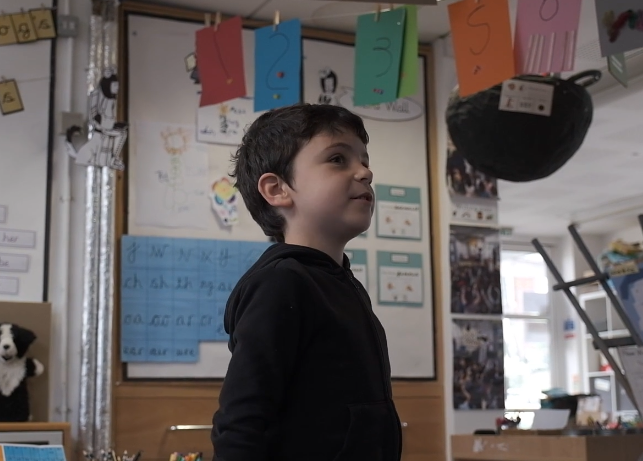With students back in the classroom and social distancing measures still in place, how can you prioritise oracy and support students to engage in high-quality classroom talk? Below we have put together some ideas to support you to develop oracy in this context.
With social distancing measures in place, you may not be able to ask your students to sit together in small groups. You’ll need to work within your school’s guidelines, perhaps sitting students further away from each other than you would usually, or asking them to swivel their chairs round to face each other.
However you manage this, make sure your expectations for oracy are clear; for example, how can students vary the volume of their voice to ensure they can be heard in this new arrangement? How might they use gestures to support others to understand their ideas? How will they alter their body language so that a speaker knows they are listening?
For secondary school students who may be expected to wear masks in class, it is even more important to explore these expectations, discussing how mask wearing could affect their ability to communicate effectively and what they can do to mitigate this.
If your school’s Covid-19 guidelines don’t allow for talk in small groups, focus instead on whole-class discussion. Your discussion guidelines or ‘ground rules’ for talk, will still be useful to frame these types of interactions. If your students are sitting in rows facing the front of the class, they may be tempted to filter all their responses through you instead of responding to each other. Instead, encourage students to summarise, probe, clarify, build on or challenge each other’s ideas.
As the teacher, you can model these sorts of responses, drawing attention to the metacognitive processes that sit around talk, ‘I didn’t quite understand X’s point so I’m going to clarify what he said by asking…’. Similarly, you could invite students to respond to each other’s ideas, ‘would anyone like to summarise X’s point?’
If your school requires group discussions to happen at a social distance and there isn’t enough space to do this in the classroom, why not make use of your school’s outdoor areas? Without the space constraints of classroom furniture, group talk at a social distance is easier to facilitate. You could use PE cones or markers to denote where students should sit.
Changing where a discussion takes place may also change how students engage in a discussion and what they say. Taking sensitive discussions out of the classroom environment, for example, might encourage more students to open up. Be mindful, however, that, away from the classroom, students may forget the norms for talk that you have established so be sure to remind them of these before embarking on any talk beyond the classroom.

Presentational talk, which involves students sharing or presenting their understanding to others, is easier to facilitate at a social distance. Students could, for example, present their understanding of a given idea or topic, teach their classmates a skill or concept, consolidating their own understanding in the process, or recite poetry aloud.
When creating opportunities for this type of talk, be sure to teach your students the skills they need to do this effectively. How can students give a lively and informative presentation? How will the language and content of a presentation change depending on the audience? How should students manipulate their voice and body language to reflect the mood of a piece of poetry?
As students transition back to the classroom, we would love to hear how you are prioritising oracy and keeping your students’ talking. Email us to let us know [email protected] or tweet us @voice21oracy
© 2024 Voice 21. Voice 21 is a registered charity in England and Wales. Charity number 1152672 | Company no. 08165798